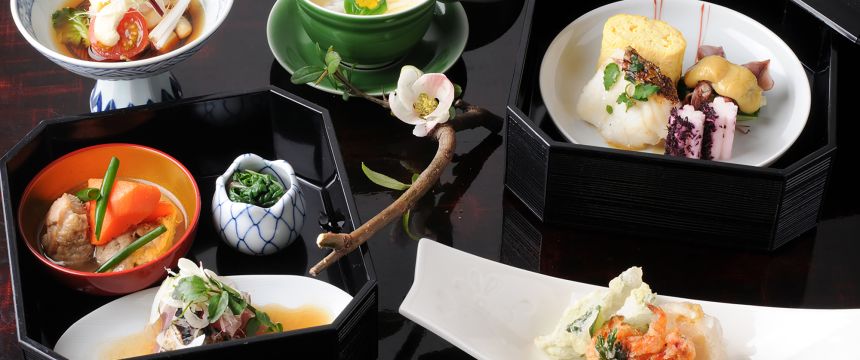Nishi-Awa, Tokushima Prefecture - Shikoku
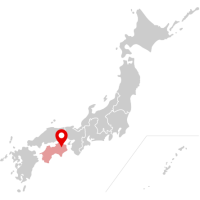
High in the hills of Nishi-Awa are remote, idyllic villages nestled peacefully on the steep slopes, where farming communities still maintain their traditional lifestyle. The local food specialties include not only soba noodles but also sobagome zosui, a thick, hearty porridge of whole buckwheat groats and vegetables, as well as river fish and the meat of game animals in the forests.
Staying in the remote countryside, visitors can observe the way the villagers live, work, and eat. The area may be harder to reach than major tourist destinations, but that is precisely why the original scenery has remained so unspoiled.
Head Deep into the Hills and Discover a New Side of Japan
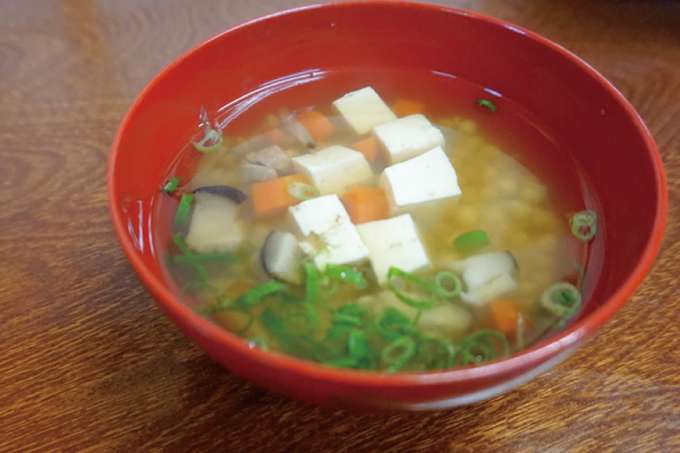
The mountains of central Shikoku are steep, wild, and thickly forested. Far from the mellow coastal plains, they stretch to the horizon interrupted only by precipitous gorges. This is inhospitable territory—and so inaccessible that in years past few people dared venture deep inside.
And yet for centuries the region known as Nishi-Awa has been home to a remarkable group of people. They built their homes high above the valley floor, the only place they could find enough flat land. For their fields, they carved narrow terraces out of the steep hillsides. They hunted and foraged, pickled and preserved. And they passed down their hard-won knowledge of survival through the generations to this day.
Who would live in such harsh, unforgiving terrain? Only those who had little choice. History books tell the story of the rivalry between the Genji and the Heike clans. Their battle for supremacy over the imperial court in Kyoto came to a head in a decisive battle some 850 years ago. The defeated Heike samurai fled for their lives, escaping far away where they could not be hunted down. According to legend, many of the farmers who still live on these mountain slopes are descended from those warriors.
Head off the Beaten Path
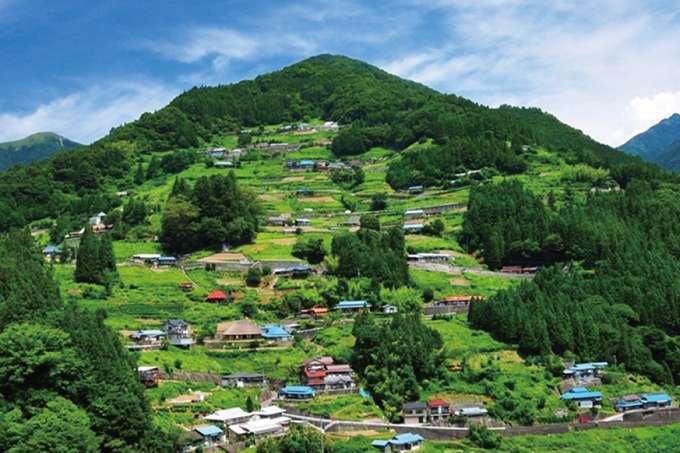
Even today, the Nishi-Awa area is a challenging destination for visitors, starting with its location, which is accessible only by a bus or rental car that must climb steep and narrow winding roads. Accommodations are simple but welcoming—some modern, but others very traditional with thatched roofs, wooden floors, and irori (sunken hearths). Farmstays offer visitors a great opportunity to glimpse the local people’s lives, their work, and their diet.
Simple and hearty is the mantra when it comes to Nishi-Awa cooking. The classic farmhouse dish, found at inns and restaurants alike, is sobagome zosui (buckwheat porridge). It is a thick porridge made of whole buckwheat groats simmered in chicken stock with a few vegetables—sansai (wild plants) in spring, mushrooms in autumn. The taste is simple and mild, but this is the kind of food that warms and energizes.
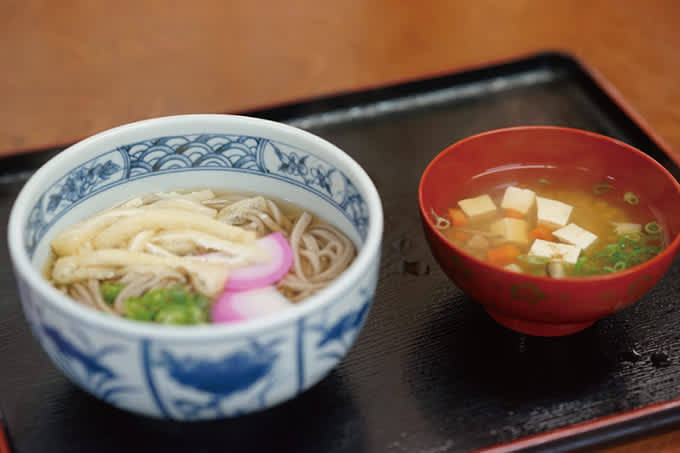
Buckwheat takes the place of rice here, because only the hardiest of grains will grow on these hillsides. Other heirloom crops include millet, potatoes, and konnyaku, which is a yam that yields a dark jelly with little flavor but plenty of gelatinous texture. The buckwheat grain is also milled to make Iya-soba noodles, another staple.
River fish are caught from the clear, fast-running mountain streams, especially amego (trout) and ayu (sweetfish). There is also plenty of wild game in the forests, such as inoshishi (boar) and shika (sika deer). Hunting is encouraged by the local authorities to maintain the health of the forests and the overall ecosystem so game meats are widely available.
Relaxing or Thrilling? Explore Your Way
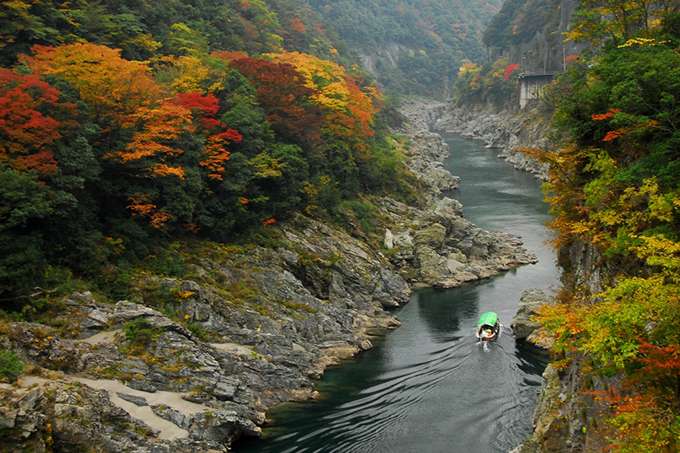
It’s a hearty diet for a rugged lifestyle in an area that retains much of its unspoiled scenery. Many come here to hike in the forests, even as far as Mt. Tsurugi, the second highest peak in Shikoku. Others head for the Oboke Gorge to take a riverboat ride. For those wanting a thrill, the gorge is also a world-class location for canyoneering and white-knuckle white-water rafting.
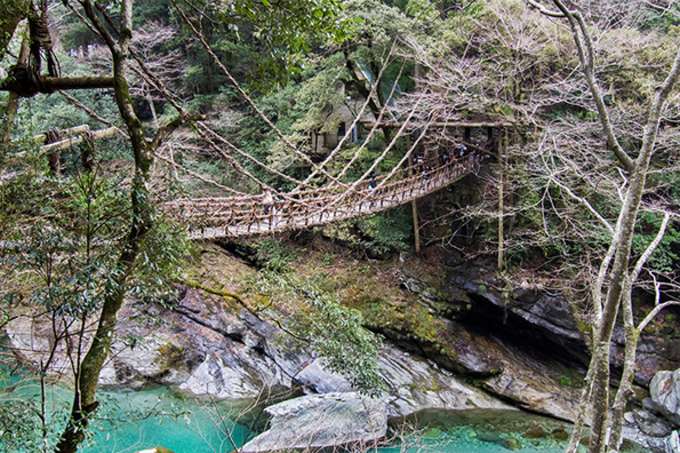
One sight that should not be missed is the vine bridges that span the river at the foot of the Iya Valley. Woven from thick creepers that grow in the forests here—and now strengthened with steel cables—these bridges, legend has it, were originally built by the Heike fugitives so that they could protect themselves by hacking through the vines and collapsing the bridges in the event of an enemy attack. Looking at them is one thing, but actually crossing them is another and strictly for those with strong nerves.
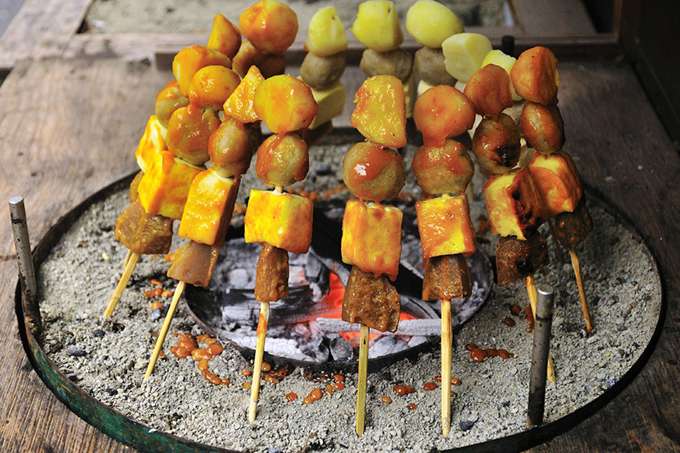
Contact Information
Nishi-Awa Tourism Association Sora-no-sato
995-1 Ikeda-cho Shima, Miyoshi-shi, Tokushima
How to Get There
Coming from Tokyo, Nishi-Awa is best accessed by plane to either Tokushima or Takamatsu Airport and then by train for one hour. By rail, you can take the Shinkansen to Okayama and then transfer to an express train on the JR Seto-Ohashi Line. Travel time takes about four and a half hours from Tokyo, two and a half hours from Kyoto or central Osaka, and two hours from Hiroshima. The bus from Awa-Ikeda Station to Iya and the Kazurabashi vine bridge takes about three hours.
Recommended Itineraries
There are many natural onsen hot-springs in the Iya Valley and the Oboke Gorge. The IyaTime website has a good list. There are several restaurants serving local food in Higashi-Iya, Miyoshi City, including the reliable Soba Dojo, which also offers classes in noodle-making.
Related Links
Nishi-Awa Tourism Association Sora-no-sato (English)
Tokushima Prefecture Tourism (English)
Nishi-Awa Farmstays (English)
Oboke Gorge Riverboat (Japanese)
Map
Featured Cuisine
Buckwheat porridge is simply made from whole buckwheat groats that have been boiled and dried. The buckwheat is simmered in stock with vegetables, mushrooms, and other seasonal ingredients until all are tender. The taste is simple and mild, but warming and energizing on chilly evenings.
All information is correct as of the time of writing.
Please check for the latest information before you travel.




















































